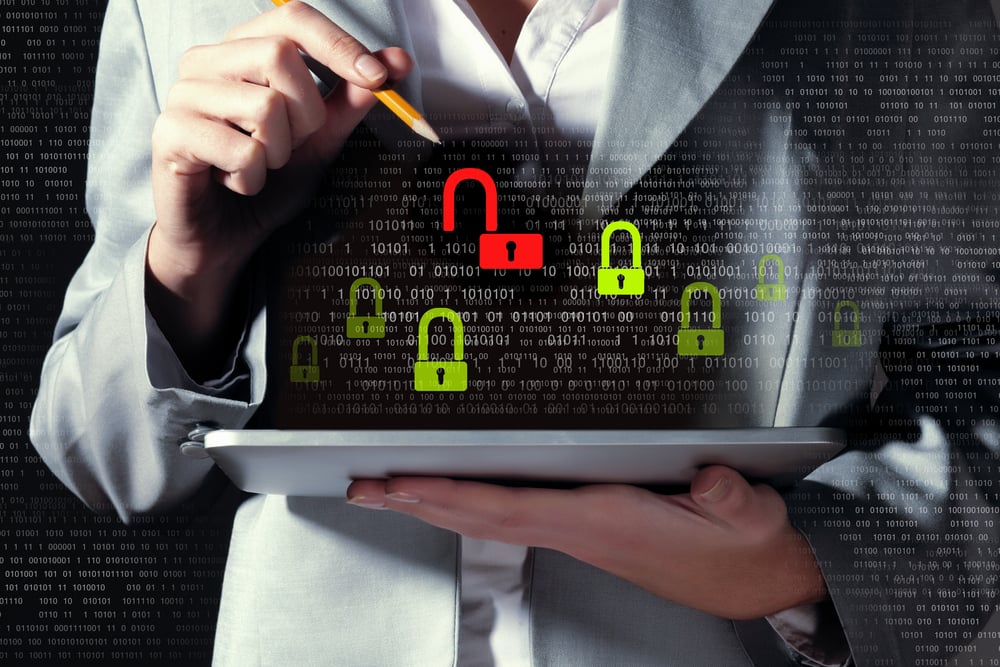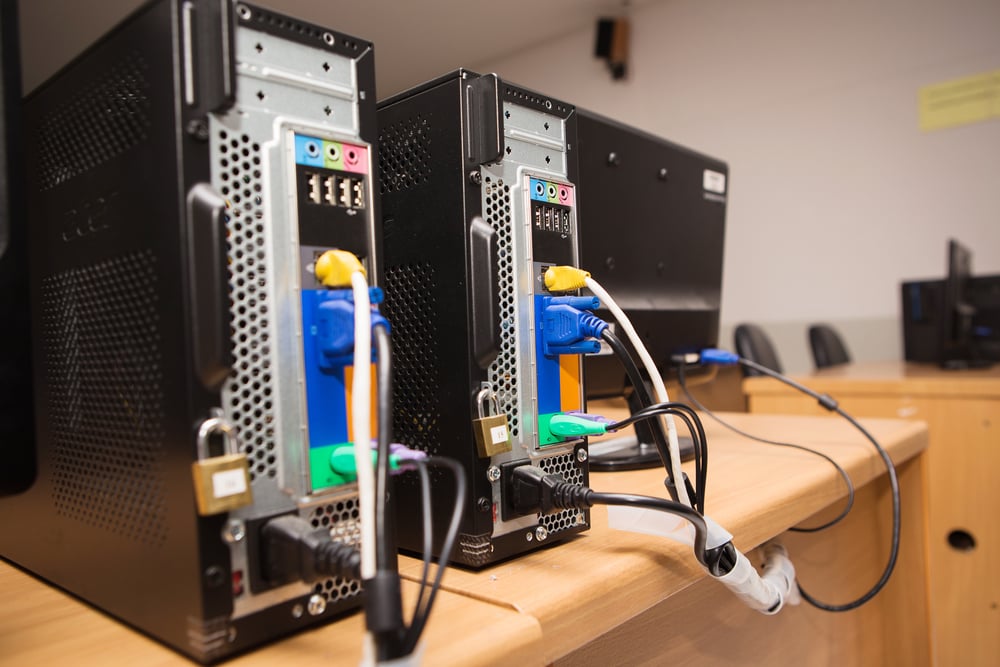9 Critical Security Checks Every Company Needs in 2025
September 12th, 2023
6 min read
.jpg?width=6000&height=4000&name=data%20center%20checklist%20(1).jpg)
How confident are you that your current cybersecurity defenses would stop a modern AI-powered attack?
Are your security checks still based on last year’s threats, not this year’s?
Phishers, scammers and hackers are using increasingly intelligent and sophisticated software to bypass your company’s security measures and gain access to your valuable data and information. In 2025, cyberattacks will often use artificial intelligence to mimic real emails, scan for weak spots, or trick employees into giving up access. These evolving tactics can slip past traditional defenses. That’s why you need to regularly ensure your security is as airtight as possible.
In this article, we’ll cover the 9 key cybersecurity checks every business should run in 2025. Think of it like a regular health check for your systems - quick, smart, and essential. By reviewing your defenses regularly, you’re not just making sure they work; you’re staying ahead of the new tricks hackers and AI-driven attacks are using to sneak in. A little proactive care now can save you a major headache later.
1. Endpoint Security
Think about how many devices are necessary to ensure your company gets the work done. Each one of these individual devices, or endpoints, is a potential target for malicious actors. Securing all endpoints within a network is essential. That’s why endpoint security in 2025 needs to go beyond traditional antivirus software.
Start with strong endpoint detection and response (EDR) or extended detection and response (XDR) solutions. These tools continuously monitor activity across all devices and networks, spotting unusual behavior early so your team can act before an attack spreads.
Pair that with DNS security from trusted providers like Cisco Umbrella, which helps block malicious traffic before it ever reaches your endpoints.
Next, make sure mobile device management (MDM) is in place. It allows your IT team to enforce security settings, remotely wipe lost or stolen devices, and ensure that every phone or tablet meets company standards before connecting to sensitive systems.
Finally, don’t overlook IoT devices. Anything connected to your network, from smart cameras to warehouse sensors, should be regularly patched, segmented on your network, and monitored for unexpected traffic.
2. Email Security
Email is still the easiest way for attackers to sneak into your business, and 2025 isn’t changing that. Phishing emails now use AI to sound more convincing, target specific roles, and even mimic your vendors or coworkers. That’s why protecting your inbox is about more than spam filters.
Here’s how to strengthen your defenses:
- Use advanced email security tools that automatically scan attachments and links before they reach an employee’s inbox
- Provide regular security awareness training so your team knows how to spot fake invoices, urgent requests, and too-good-to-be-true offers
- Run simulated phishing campaigns to test employees in a safe way and keep everyone alert to evolving tactics.
3. Data Protection & Encryption Readiness
Your company’s data is one of its most valuable assets, so it’s not enough to simply “back things up.” You need to know where your sensitive data lives, who can access it, and how it’s protected.
Start by classifying your data. Identify what’s confidential, regulated, or business-critical. Then make sure that data is encrypted both at rest and in transit. That means files stored in databases, emails being sent, and backups in the cloud should all be locked down with strong encryption standards.
It’s also a good time to think ahead: post-quantum encryption is on the horizon. While it’s not mainstream yet, it’s smart to choose systems that are flexible enough to adapt when quantum-safe standards arrive.
If your team handles large amounts of business data across multiple platforms (like JD Edwards, cloud services, or shared drives), consider integrating a data loss prevention (DLP) or governance solution. DLP solutions utilize a combination of technologies and policies to monitor, detect and prevent unauthorized transmission or access of confidential data. DLP strategies address both intentional and unintentional data breaches, provide protection, and assist with compliance regulations.
4. Continuous Vulnerability and Posture Management
A vulnerability scan helps your organization take necessary measures to eliminate weak spots before they can be exploited by hackers, but in 2025, running a single “vulnerability scan” once a year just doesn’t cut it. You need ongoing visibility into what’s exposed and how to fix it before an attacker finds it first.
Start with continuous vulnerability scanning across your servers, networks, and cloud platforms. These automated tools check for unpatched software, weak configurations, and known exploits. Even better, they can prioritize the most critical issues so your team doesn’t get buried in alerts.
Next, strengthen your cloud security posture management (CSPM). Whether you’re using AWS, Azure, or Oracle Cloud Infrastructure, CSPM tools help you spot open storage buckets, insecure permissions, or misconfigured firewalls before they lead to a breach. Think of it as a health monitor for your cloud setup.
5. Identity & Access Management (Zero Trust in Practice)
If there’s one thing every security framework agrees on, it’s this: never assume trust. That’s the heart of modern cybersecurity, a mindset known as Zero Trust. It’s all about verifying every user, every device, and every connection, no matter where they are or what network they’re on.
Here’s how to put that mindset into action:
-
Audit access regularly. Review who has access to what across your systems. Roles change, vendors come and go, and old accounts can slip through the cracks. Cleaning up unused or unnecessary access is one of the easiest ways to reduce risk.
-
Enforce stronger sign-ins. Require multi-factor authentication (MFA) across all critical systems to make it much harder for attackers to break in.
-
Secure machine identities. Cloud services, APIs, and AI tools also have their own credentials. Make sure each has its own access policy and is monitored just like a user account.
- Rethink the network perimeter. Firewalls and VPNs still matter, but they’re just one part of a bigger Zero Trust approach. Use firewalls to segment your network and limit internal communication, and consider Zero Trust Network Access (ZTNA) for granting users access only to the apps or data they truly need.
Utilizing the two-step verification process of multi-factor authentication layers another security measure on top of the traditional username and password combination. By enhancing authentication security, malicious actors have a much more difficult time attempting to breach your systems.
6. Monitoring, Detection and Response
Even the best defenses can’t stop every threat. That's why detection and response are just as important as prevention. Start by making sure your company has real-time visibility across its environment. Tools like Security Information and Event Management (SIEM) and newer Extended Detection and Response (XDR) platforms pull data from endpoints, servers, networks, and cloud systems so you can see everything in one place. In turn, your security team can identify and respond that much faster.
7. DNS and Network Security
Think of network and DNS security as your organization’s early warning system, quietly stopping threats before they become real problems. It’s one of the easiest and most effective upgrades you can make to strengthen your overall security posture.
Here’s how to make it work for you:
-
Start with DNS security and web filtering. Block malicious sites before your users ever reach them. This simple step helps prevent phishing attacks, malware downloads, and command-and-control activity. Tools like Cisco Umbrella provide cloud-based DNS protection that works wherever your team connects.
- Segment your network. Don’t rely on one big, open environment. Break your network into smaller, controlled sections so if an attacker gets in, their movement is limited.
-
Add visibility and control. Use secure web gateways or cloud access security brokers (CASB) to monitor and manage internet traffic, especially as more employees work remotely or in hybrid setups.
8. AI and Machine Identity Controls
AI has officially joined the workplace, and it’s not just employees logging into your systems anymore. Bots, digital assistants, and automated workflows all need access to your data. Each one of these is what’s called a machine identity, and just like human users, they can be stolen, misused, or exploited if not properly managed.
Start by making a list of all the AI tools, scripts, and automations connected to your systems. That includes chatbots, integrations with platforms like Microsoft 365 or Oracle Cloud, and any in-house automation you’ve built. Each should have its own credentials and limited access. Never share user accounts with bots or background services.
Then, put access monitoring and credential rotation in place. Machine credentials (like API keys and tokens) should be treated like passwords, rotated regularly, stored securely, and tracked for unusual use.
Finally, be cautious with any AI that interacts with company data. Make sure sensitive or confidential information doesn’t get shared with public AI models, and review what permissions these tools request before granting access.
9. Third Party/Vendor Security Review
Even if your own defenses are strong, your partners, vendors, and software providers can still expose you to risk. In 2025, supply-chain attacks are one of the fastest-growing cybersecurity threats, so it’s important to know who you’re trusting with your data and how they protect it.
Start by reviewing your vendor list. Identify every third-party service that has access to your systems or data, from cloud providers and software vendors to marketing tools and payment processors. Once you know who they are, verify that each has proper security certifications or compliance frameworks in place (like SOC 2, ISO 27001, or GDPR).
Next, make sure your contracts and service agreements include clear language about data protection and breach notification. That way, if something goes wrong on their end, you’ll know how and when you’ll be notified.
Start Your First Security Check
At the end of the day, your business’s cybersecurity is only as strong as the systems you consistently check and update. These 9 essential reviews are your roadmap to staying ahead of evolving threats in 2025.
You came here looking to make sure your defenses aren’t stuck in the past, and now you know exactly what to review, how often, and why it matters. The good news? You don’t have to tackle everything at once.
Your next step is to choose just one area, like email security or endpoint protection, and schedule a review of it. Repeat that quarterly, and you’ll be miles ahead of companies that wait for a breach to take action.
At ERP Suites, we’ve helped businesses like yours implement modern, realistic cybersecurity practices that actually stick. If you’d like expert support conducting these reviews or building a custom plan, we’re ready when you are.
Leyla Shokoohe is an award-winning journalist with over a decade of experience, specializing in workplace and journalistic storytelling and marketing. As content manager at ERP Suites, she writes articles that help customers understand every step of their individual ERP journey.
Topics:


.png?width=960&height=540&name=Blog%20Images%20(65).png)
.png?width=960&height=540&name=Blog%20Images%20(49).png)





